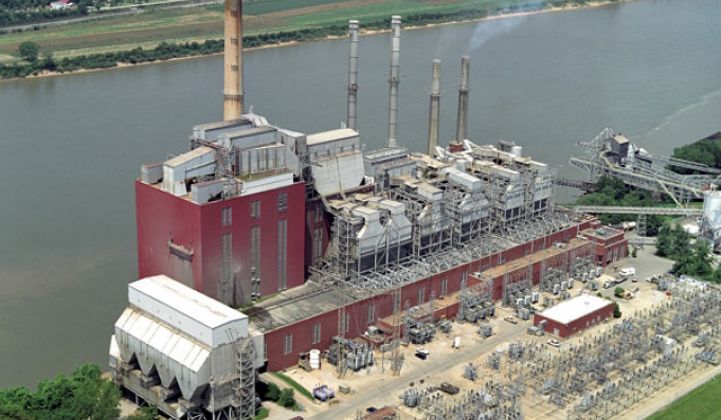Duke Energy will install a 2-megawatt energy storage project with LG Chem and Greensmith in Ohio.
The lithium-ion battery system will be placed at Duke’s retired W.C. Beckjord coal-fired power plant in New Richmond, Ohio, southeast of Cincinnati. The battery storage will be used to provide ancillary services in PJM’s frequency regulation market.
LG Chem is providing the lithium-ion battery and operating system, while Greensmith will provide controls, analytics software and systems integration. Parker Hannifin will provide a 2-megawatt power conversion inverter.
Parker Hannifin is also a member of Duke’s Coalition of the Willing, a broad group of grid vendors that are working with the regulated arm of the mega-utility to see how different grid-edge technologies can work together in field tests. The Beckjord project will be the second time LG Chem has teamed up with Greensmith to provide fast frequency regulation in PJM.
Duke also has a 36-megawatt energy storage project in Texas at Notrees Windpower farm and five other smaller projects ranging from 75 kilowatts to 400 kilowatts, mostly in North Carolina.
When it comes on-line later this year, the 2-megawatt installation in Ohio will join another 2-megawatt battery system that has been in operation at the site since January. “The existing asset has lived up to our expectations, which is why we’re asking for another 2 megawatts and we’re able to get some cost synergies,” said Spencer Hanes, director of commercial policy at Duke Energy. Toshiba is the battery vendor for the first installation.
“Delivering that power in seconds, as opposed to a power plant that could take 10 minutes or more to ramp up, is the unique value the battery system provides to grid operators,” Phil Grigsby, Duke Energy's vice president of commercial transmission, said in a statement.
Hanes said prices for batteries have come down about 10 percent in just the past six months. “It’s a very competitive market, so we have benefited from price declines, namely in lithium-ion, but for other parts of the system as well,” he said.
The 4-megawatt energy storage project is Duke’s first battery project to bid into fast frequency regulation services in PJM and is optimized to provide ancillary services. The Toshiba system has a performance rating above 95 percent so far, according to Hanes.
Although the system was placed at a retired coal plant because of available transmission capacity at the site, it also highlights Duke’s steady move to more diversified energy resources. Duke will invest $500 million in 278 megawatts of utility-scale solar and has plans to add up to 500 megawatts of utility-scale solar in Florida by 2024.
Duke is also repurposing a retired coal plant in Asheville, N.C., replacing it with a combined-cycle natural gas plant and a solar farm. “It only makes sense to use the infrastructure you already have in place,” said Tammie McGee, spokesperson with Duke Energy.
If the fast-responding frequency regulation market remains attractive, Duke could expand its fleet of batteries to bid into the market, especially if system costs continue to decline. “Duke is excited about the potential for energy storage cost to dramatically reduce over time,” said Hanes. “But it still seems early.”



